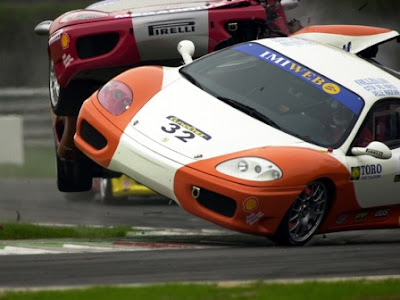| Fruit | Benefit | Benefit | Benefit | Benefit |
| apples | Protects your heart | prevents constipation | Blocks diarrhea | Improves lung capacity |
| apricots | Combats cancer | Controls blood pressure | Saves your eyesight | Shields against Alzheimer's |
| artichokes | Aids digestion | Lowers cholesterol | Protects your heart | Stabilizes blood sugar |
| avocados | Battles diabetes | Lowers cholesterol | Helps stops strokes | Controls blood pressure |
| bananas | Protects your heart | Quiets a cough | Strengthens bones | Controls blood pressure |
| beans | Prevents constipation | Helps hemorrhoids | Lowers cholesterol | Combats cancer |
| beets | Controls blood pressure | Combats cancer | Strengthens bones | Protects your heart |
| blueberries | Combats cancer | Protects your heart | Stabilizes blood sugar | Boosts memory |
| broccoli | Strengthens bones | Saves eyesight | Combats cancer | Protects your heart |
| cabbage | Combats cancer | Prevents constipation | Promotes weight loss | Protects your heart |
| cantaloupe | Saves eyesight | Controls blood pressure | Lowers cholesterol | Combats cancer |
| | | | | |
Men's World
Men's passion and interest
KNOW ABOUT THE BENEFITS OF HAVING FRUITS AND VEGETABLES
7 Unique Ways To Make Someone Smile

Do you want to put a smile on someone's face? Maybe make their day a little bit brighter? It doesn't have to take much time or money on your part. In fact, many things can be done as a part of your normal routine and cost little or nothing. You won't know how many people are encouraged by your kindness because smiles are contagious. Try out one or more of these 7 ways today to put smiles on their faces.
1. Write an encouraging note to others that have encouraged you or that need encouragement. Handwritten notes that are given to encourage, not just for thanking someone for a gift, are rare. That makes handwritten notes even more special. Start a new practice of sitting down and writing an encouraging note on a regular basis. You just might start an epidemic!
2. Take a friend out to lunch or invite her to your home for a meal. You will get to know each other even better than you do right now. If you feel like being more adventurous, throw a party for several of your friends and put smiles on a multitude of faces.
3. Give someone an inspirational book to read. You will feel good doing it, reading the book will change the person, and they will think of you every time they read it.
4. Ask a friend or relative if you can take care of their kid(s) for a day or evening. If you have been a parent, you know the value of being able to have a few hours of "adult time" without worrying about the children. Don't wait to be asked to baby-sit when it is required. Offer to do it at a time when the parent can do something fun and relaxing.
5. Deliver a meal to someone you know that is sick or having a rough time. We have all been sick and know the last thing you want to do is be out of bed. There are also times when life is tough and it is hard to do all of the daily chores. You can be a tremendous help by providing a meal that can be enjoyed.
6. Volunteer time to supporting your local church or charity. Every minute you dedicate to a church or charity will cause many smiles. You will put a smile on the face of each leader just for helping without being asked. You will also be putting smiles on the faces of those that are being helped through the organization.
7. Thank everyone that supports you throughout the day. The list of those that you come in contact with is endless. Remember family and friends, secretaries, co-workers, teachers, Sunday school teachers, pastors, store employees, janitors, gas station attendants, those that deliver your mail and newspaper, and servers at restaurants.
I know this is a list of 7 ways to put a smile on someone's face, but there is one more way that can't be ignored. Reveal a genuine smile to everyone you meet. You will experience how easy it is to get others to smile!
100 Keyboard Shortcuts, very useful!
5 Tips On Making Your Car More Fuel Efficient
10 Tips To Make Sure Your Financial Budget Will Succeed
EASY vs DIFFICULT
| EASY | DIFFICULT | |
| Easy - to judge the mistakes of others | Difficult - to recognize our own mistakes | |
| Easy - to talk without thinking | Difficult - to refrain the tongue | |
| Easy - to hurt someone who Loves us. | Difficult - to heal the wound... | |
| Easy - to forgive others | Difficult - to ask for forgiveness | |
| Easy - to set rules. | Difficult - to follow them... | |
| Easy - to dream every night. | Difficult - to fight for a dream... | |
| Easy - to show victory. | Difficult - to assume defeat with dignity... | |
| Easy - to admire a full moon. | Difficult - see the other side... | |
| Easy - to stumble with a stone. | Difficult - to get up... | |
| Easy - to enjoy life every day. | Difficult - give its real value... | |
| Easy - to promise something To someone | Difficult - to fulfill that promise... | |
| Easy - to say we love. | Difficult - to show it every day... | |
| Easy - to criticize others. | Difficult - to improve oneself... | |
| Easy - to make mistakes. | Difficult - to learn from them... | |
| Easy - to weep for a lost love. | Difficult - to take care of it so not to lose it. | |
| Easy - to think about improving. | Difficult - to stop thinking it and put it into Put it into action.... | |
| Easy - to think bad of others | Difficult - to give them the benefit of the Benefit of the doubt.... | |
| Easy - to receive | Difficult - to give | |
| Easy - to read this | Difficult - to follow | |
| Easy - keep the friendship with Words | Difficult - to keep it with meaning | |
Take The Extra Mile: Fuel Efficiency Tips
